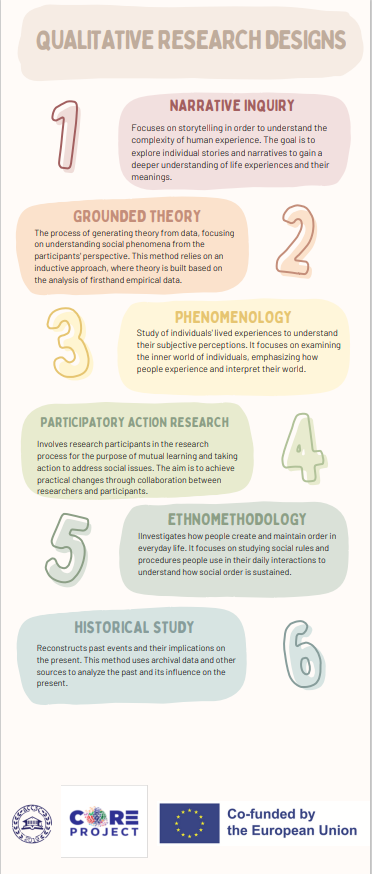Baxter, P, & Jack, S. (2008) Qualitative case study methodology: Study design and implementation for novice researchers. The Qualitative Report, 13, 544–559.
Bradbury, H. (2015). Introduction: How to Situate an Define Action Research. In H. Bradbury (Ed.), The Sage Handbook of Action Research (3rd ed.). London: Sage Publications.
Connolly, M., & Clandinin, D. J. (1990). Stories of experience and narrative inquiry. Educational Researcher, 19, 2–14.
Creswell, J. W. (2007). Qualitative inquiry and research design: Choosing among five approaches. Thousand Oaks, CA: Sage.
Creswell, J. W., Hanson, W. E., Clark Plano, V. L. (2007). Qualitative research designs. The Counselling Psychologist, 35(2), 236–264.
Creswell, J. W., & Miller, D. L. (2000). Determining validity in qualitative inquiry. Theory into Practice, 39, 124–130.
Czarniawska, B. (2004). Narratives in social science research. Thousand Oaks, CA: Sage.
Dörnyei, Z. (2007). Research Methods in Applied Linguistics. Oxford: Oxford University Press.
Field, P. A., & Morse, J. M. (1985). Nursing research: The application of qualitative approaches. Rockville, MD: Aspen.
Leedy, P. D., & Ormrod, J. E. (2005). Practical research: Planning and design. Upper Saddle River.
Leininger, M. M. (1985). Ethnography and ethnonursing: Models and modes of qualitative data analysis. In M. M. Leininger (Ed.), Qualitative research methods in nursing (pp. 33–72). Grune& Stratton.
Moustakas, C. E. (1994). Phenomenological research methods. Sage Publications, Inc.
Pečujlić, M., & Milić, V. (1995). Metodologija društvenih nauka. Grafika.
Plummer, K. (1983). Documents of Life An Introduction to the Problems and Literature of a Humanistic Method. London Unwin Hyman.
Ristić, Ž. (2016). Objedinjavanje kvantitativnih i kvalitativnih istraživanja. Evropski centar za mir i razvoj (ECPD), Univerzitet za mir Ujedinjenih nacija.
Stake, R. (1995). The art of case study research. Thousand Oaks, CA: Sage.
Stringer, E. (1999). Action Research (2nd ed.). SAGE Publications, Thousand Oaks.
Yin, R. K. (2003). Case Study Research Design and Methods (3rd ed.). Sage, Thousand Oaks.


